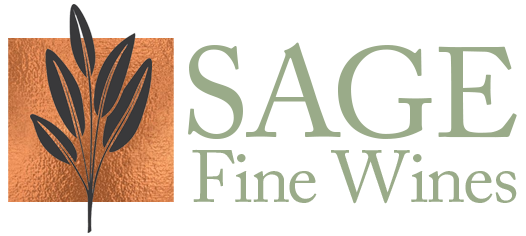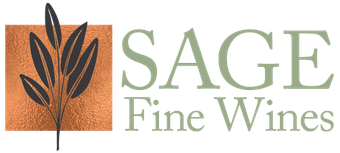Famed Regions
California is known for many varieties of wines from all over the world. Comprising all three major weather and climatic categories throughout the state - Maritime, Mediterranean and Continental - almost every major and minor noble variety is able to grow well in the region.
Napa Valley
Napa is one of the few American Viticultural Areas (AVAs) or appellations known to contain all three major climatic categories within its 18 sub-AVAs along with one of the most diverse geological conditions found anywhere. South Napa in the Los Carneros region borders San Pablo Bay allowing for the
Maritime influence from the cool ocean breezes. This region is also the only one that Napa shares with Sonoma Valley to the south. Mid-valley Napa is the ideal
Mediterranean style influence with temperatures differing from north to south by as much 30 degrees from Calistoga to Carneros where the Napa river runs the entirety of the 35 mile long valley floor, The mountain regions provide both east and west facing
Continental sub-appellations bordering the valley that is only 5 miles wide at its widest point.
Key varieties:
Noble Bordeaux varieties: Cabernet Franc, Merlot, Cabernet Sauvignon, Malbec, Petite Verdot (all regions)
White/Red Burgundy: Chardonnay & Pinot Noir (Los Carneros, Mt. Veeder, Spring Mt.)
Zinfandel, Petite Sirah,
Syrah,
Charbono (Howell Mt., Calisotga, Mt. Veeder,
valley floor)
Sauvignon Blanc (Carneros, Spring Mt., Howell Mt.,
mid-valley river floor)
Sonoma County
Sonoma is one of the most recognized regions outside of Napa (and 2.5 times larger) with more varied climatic and geographical conditions producing some of the most diverse range of grapes containing over 60 varieties within its 19 sub-AVAs. Sonoma far outproduces Napa in overall wine production and variety.
Key varieties:
White/Red Burgundy: Chardonnay & Pinot Noir (Los Carneros, Russian River, Green Valley, Sonoma Coast, Petaluma, Fort Ross)
Zinfandel, Petite Sirah,
Syrah
(Dry Creek, Rockpile, Sonoma Valley, Moon Mt.)
Sauvignon Blanc (Los Carneros, Sonoma Valley, Sonoma Coast, Petaluma Gap)
Noble Bordeaux varieties:
Cabernet Franc, Merlot, Cabernet Sauvignon (Alexander Valley, Knights Valley, Moon Mt., Bennet Valley)
Mendocino County
Mendocino County has a wide range of
viticultural mesoclimates that are influenced by the county's diversity in climatic and geography. On the eastern borders of the county is the Mayacamas Mountains separating it from nearby Lake County and the influences of the large Clear Lake. Within the county, the Mendocino Range segment of the larger California Coast Ranges essentially divides the region into two climatic spheres. The land to the west of the ranges, closest to the coast tend to have more maritime climate that includes more cooling and rain influences from the Pacific ocean. There are 12 sub-AVAs within the region.
Key varieties:
Whites: Chardonnay, Riesling, Gewürztraminer (Anderson Valley, Mendocino Ridge, Yorkville Highlands)
Sparkling (methode traditionale): Philo, Boonville, Navarro
Paso Robles
The Paso Robles AVA is still acknowledged for its heritage grape, Zinfandel, but has gained recognition from a wider range of grape varietals as well. In the 1950s and 1960s, growers began to plant Bordeaux varieties, particularly Cabernet Sauvignon, in the area. Starting in the 1980s, there have been increased plantings of many Rhône varieties, including the first Syrah planted in California, as well as Viognier and Roussanne to name a few.[5] The emerging popularity of the region's wines led it to become the first site of the bi-annual "Hospice du Rhône" conference on Rhône style wine. Today, Paso Robles Wine Country is receiving attention for its unique Paso blends. These wines are unique to the area, and with varietal make-ups that do not follow traditional rules and expectations of winemaking, as characteristic in other regions of the wine world.
Key varieties:
Reds: Zinfandel, Petite Sirah, Alicnte Bouchet, Syrah
Whites: Southern Rhone Style - Marsanne, Rousanne, Viognier
Alternative Reds: Southern Rhone - Grenache, Syrah, Mourvedre
Amador County/Sierra Foothills
Amador County is located in Northern California 100 miles from San Francisco and 40 miles east from Sacramento in the Sierra foothills. Its elevations range from 250’ to 9,000’. Amador was once the center of viticulture in California during the Gold Rush. The oldest Zinfandel vineyard in the United States is located in Amador planted just 4 years after the Civil War. The region was slowly resurrected after prohibition growing to almost 4,000 planted acres and 40 wineries. The wine industry is the largest economic enterprise in the county.
Key varieties:
Reds: Old vine Zinfandel, Petite Sirah, Alicante Bouchet, Syrah, Charbono, Petite Verdot
Italian varieties: Fiano, Vermentino, Barbera, Nebbiolo, Montepulciano, Sangiovese, Aglianico
Whites: Southern Rhone Style - Rousanne, Viognier, Grenache Blanc
Alternative Reds: Grenache, Syrah, Mourvedre, Tempranillo



